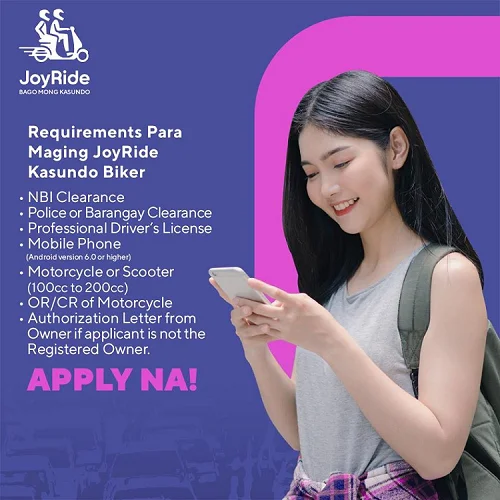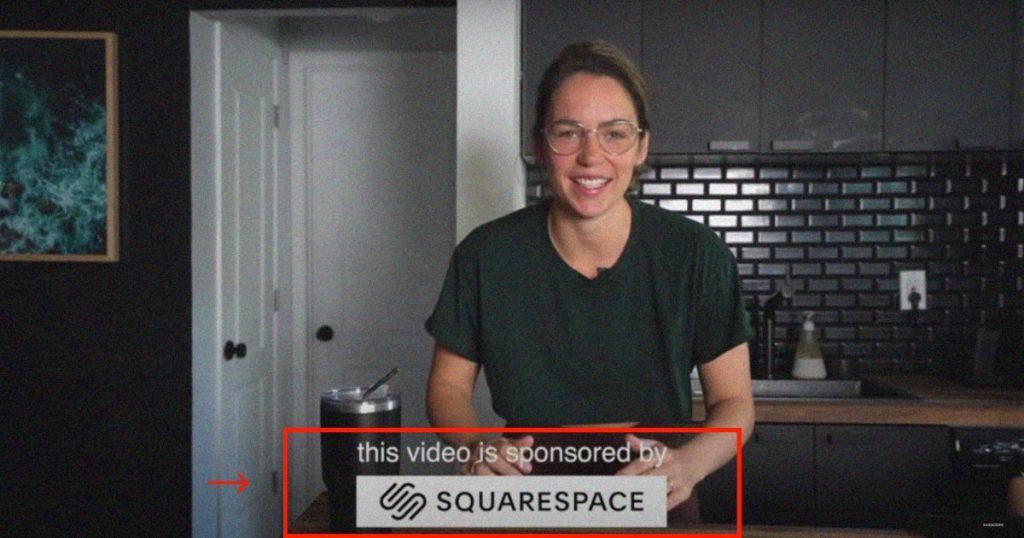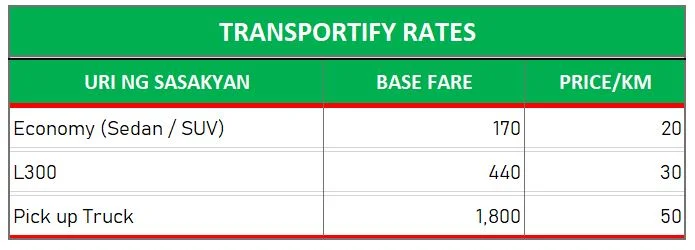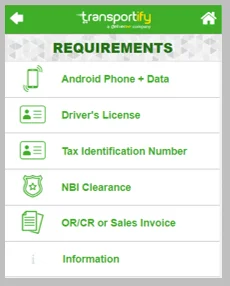In a country where one’s financial security is strongly associated with one’s ability to hold down a 9-to-5 job, the idea of earning money at home still isn’t seen as a legitimate career option. “Scam ba ito?” we’d ask ourselves. “Can you really earn money at home in the Philippines?”
Such misgivings are normal—expected even—but if the ever-growing popularity of social media and other online platforms across demographics tells us anything, it’s that the local landscape is ripe for digital transformation, and with that shift come opportunities for online work for Filipinos. Here are some ideas you might want to consider:
- Blogging or vlogging
- Doing freelance work
- Online selling
Blogging or vlogging
If you enjoy creating content and sharing them with other people, you can create a blog or vlog, depending on whether you prefer your content to be read or watched. The term blog was derived from the word weblog, while vlog is short for video blog.
Things you’ll need to set up a blog or vlog
To set up a blog, all you need is an Internet connection, a laptop, your actual content, and a platform to post your content on. There are plenty of free and reliable platforms for blogs, including WordPress and Blogger. You don’t need to know how to code either as both platforms have ready templates to choose from.
The requirements for setting up a vlog are more or less the same with a few important additions: a camera and an editing software or app. If you’re just starting out, there’s no need to buy the latter. There are plenty of free ones such as OpenShot, VSDC Video Editor, and even Windows Movie Maker.
How to earn from blogging and vlogging
If you want to earn from blogging or vlogging, the first thing you need to make sure is that your blog or vlog generates enough traffic and that it has plenty of high-quality content. To the uninitiated, this simply means that it should be popular enough that a lot of people visit it often and that you offer your audience content that they will find useful. Getting to this point may take some time, however, so you might want to consider if blogging or vlogging is worth it in the first place.
There are several ways you can earn from both:
- Earn from ads
- Brand sponsorship
- Affiliate marketing
- Exclusive content
Earning from ads
You can earn from ads when you sign up for an ad network and allow advertisers to run said ads on your blog or vlog. The most popular ad network for both bloggers and vloggers is currently Google AdSense, which has its own set of policies you’ll need to study well, so that you can get approved. Yes, you read that correctly. Not all blogs or vlogs that sign up for Google AdSense get accepted.
As mentioned earlier, your blog or vlog needs to have enough traffic and high-quality content before it can start earning. Perhaps to help make sure blogs amass a decent amount of both, Google AdSense actually requires them to be active for at least six months.
Vlogs and their platforms also have their own set of policies apart from those of Google AdSense. YouTube, for example, requires vlogs to be part of the YouTube Partner Program, have a minimum of 4,000 public valid watch hours in the last 12 months, have more than 1,000 subscribers, in addition to being approved by Google AdSense, before they can start earning from ads.
How much you’ll earn is dependent on the policies set by your platform and chosen ad network, and of course, your blog’s or vlog’s actual performance. However, don’t expect too much right from the bat. Case in point: According to Influencer Marketing Hub, a YouTube channel earns an average of $3 to $5 per 1,000 views.
Earning from brand sponsorship
Another way you can earn from your blog or vlog is through brand sponsorships or when advertisers hire you to write or talk about their brand. While setting this up isn’t as complicated as when you’re trying to earn from ads, you’ll still want to read up on your platform’s policies, as they might require you to tag your blog post or vlog as an ad or clearly specify that you’re putting out paid content.
As with all revenue streams, two important factors help determine eligibility: traffic and content. After all, why would advertisers work with you if nobody is reading or watching your content? Every advertiser, however, has their own definition of good traffic and good content. It’s all arbitrary, but in general, the bigger the blog or vlog, the bigger the advertisers they attract.
Unlike earning from ads where profits are predetermined by the policies set by your chosen ad network or platform, how much you get paid from brand sponsorship deals is between you and the advertiser. It’s therefore good practice to have a set of rate cards ready in case the opportunity presents itself. A rate card is essentially a table of fees for your services. If you don’t know how much to charge for anything, try to research the average rate for sponsored blog posts or vlogs, and then adjust based on what you think your blog or vlog is worth. Different creative executions can warrant different rates. As your blog or vlog grows, you can always update them accordingly.
Earning from affiliate marketing
If you’ve entertained thoughts of blogging or vlogging in the past, you might have come across the term affiliate marketing several times. It can sound a bit intimidating, but it’s actually just advertisers hitching a ride on your blog or vlog to get your audience to purchase or sign up for their product or service. In a nutshell, you’re given a link that leads to their website and every time someone makes a purchase or signs up—or every time they “convert” as digital marketers say—you earn a commission.
To unlock this revenue stream, you need to join an affiliate network like Involve Asia or a brand that has an existing affiliate program like Zalora. However, application doesn’t mean approval. Yes, just like when you apply for an ad network, affiliate networks and programs can say no to your blog or vlog. Reasons for rejection vary depending on the network or brand, but a non-functional blog or vlog or methods of promotion that don’t comply with the network or brand’s rules are some of the common culprits.
It’s recommended that you study the policies mandated by your chosen affiliate network or program before you even sign up, so you know exactly what you’re dealing with. If you have any questions, most of these entities have helpful FAQs on their websites. Don’t hesitate to do more research online or email their support center either.
Earning from exclusive content
Another way you can monetize your blog or vlog is by offering your audience exclusive content. If you think that they would enjoy seeing, say, what happens behind the scenes when you stage a photo shoot or if they want to know more about your creative process, you can offer them access to that content for a fee or a donation.
Again, different platforms have different rules; they also have features you can maximize. WordPress has Premium Content Block, which allows blog owners to restrict content to paying members only. Unfortunately, this is a feature that’s only available for paying WordPress users. On YouTube, you’re allowed to offer exclusive content when you apply for a channel membership. Read about the policies and eligibility requirements of YouTube’s channel membership here.
Doing freelance work
If you’re interested in how to earn money at home without any investment, freelancing is a very viable option. As a freelancer, you can accept work from different clients at different times. Not all freelance work can be done at home, but there are certainly plenty that fall into the category, including writing, art, data encoding, web design, web development, consultancy, community management, and even some forms of photography.
What you need to set it up
As a freelancer, your clients aren’t likely to provide you the same technical support you might expect to receive as an employee. If you’re a virtual assistant, no one will give you a laptop. If you’re a video editor, you’ll be expected to use your own editing software. Clients won’t usually spend for your Internet connection either. Therefore, it’s important that you already have the proper equipment and tools that are expected for the jobs that you want to take. You can choose to invest in them, of course, but that’s not a decision that you should make lightly, especially if you don’t have jobs waiting for you in the pipeline.
That said, there’s plenty of work to be found through the Internet or word of mouth. Go through Facebook hiring pages, sign up for freelance portals like Upwork, or reach out to family and former colleagues. While you’re making connections, don’t forget to prepare a portfolio of your work. You can choose to send it to your potential clients as a PDF document—Canva has free and well-designed templates you can use—or you can create a website that they can easily check out online. Some freelance desks also have built-in features on their website that allow you to upload sample work.
How to earn from freelancing
The great thing about being a freelancer is that you usually get to set your own fees. Think carefully about the value of your work and create a standard rate card or table of fees for your services. If you’re a writer, for example, have standard fees for articles with certain word counts. How much will you charge for a 500-word article as opposed to a 1,500-word one? When possible, include important caveats when you send your rates as well. Is there a maximum number of revisions you’re willing to make? How much time do you need to get the job done?
If you’re using a freelancer portal, you’ll most likely be asked to specify your proposed rate when you apply for a job. However, keep in mind that the portal will likely take a cut from your proposed fee—after all, they, too, need to earn. Just make sure you review the portal’s policies carefully, so that you’re not blindsided by extra charges.
During your freelance journey, you might also encounter the term retainer fee, whose nature, in our experience, varies from client to client. There are clients who use retainer fees as a means to get discounted rates in exchange for guaranteed work for a period of time. Others promise a minimum amount upfront even if the value of the work commissioned during the agreed time period turns out to be lower than the retainer fee.
Regardless of how much work you get or through which channels you get clients, remember to do your best every time. Freelancers depend on good feedback for work. One happy client can lead to two more jobs from others in the same way that an unhappy one can make offers dry up.
Online selling
These days, e-commerce, or the act of buying and selling goods via the Internet, has become the norm. Almost anything can be bought and sold online. You can peddle handmade trinkets, baked goods, or even secondhand items.
Things you need for online selling
As with any business, capital is important. It’s not just used to pay for goods upfront, but also to build your online store and make sure people actually find it—the Internet is called the World Wide Web for a reason. Let’s go through each.
Paying for goods
Whether you’re sourcing your products from a supplier or creating them yourself, there is a corresponding cost. However, if you’re planning to source your products from suppliers, there is a way to avoid paying for the goods outright. You can even wash your hands off managing inventory and facilitating delivery. This is a retail fulfillment method known as dropshipping.
The first thing you need to do is find a supplier amenable to dropshipping. There are many online marketplaces for this. Oberlo, owned by e-commerce giant Shopify, is one. Another popular marketplace is Doba. Working with these dropshipping companies allows you to focus only on selling. Once you close a sale, that’s the only time the product is bought from the supplier, who in turn, will manage inventory and customer delivery.
While dropshipping eliminates the need to buy and maintain stocks, it does have some downsides. One of them is precisely the fact that you don’t have stocks on hand. Another is that you only earn a percentage of the sale, so you might not earn as much as if you had more control over pricing. What you earn might not necessarily be worth the costs of the e-commerce platform or online store and digital marketing either. Then again, you could also be lucky enough to end up with a highly coveted product.
Setting up an online store
If you’re doing dropshipping, there are several recommended e-commerce platforms: Shopify, Magento, and WooCommerce, BigCommerce, and OpenCart. Some of these are free, while others are paid.
If you plan to go about it the old-fashioned way, you have more options. You can sell on Shopee, Carousell, Facebook Marketplace, and Instagram.
Engaging in digital marketing
Since the Internet is already crowded with online sellers, it’s hard to get noticed without a little help. The good news is that most e-commerce platforms have developed marketing solutions to help you. For a fee or for participating in their discount schemes, you can be part of their featured list of sellers, appear top on the list of results every time, or get some sort of marketing boost. If you’re on social media, you can also try doing paid advertising and launch sponsored Facebook or Instagram ads to target more of the right people.
If you don’t have much in the way of a marketing budget, there are other ways to get the word out. Reach out to friends and family and have them try your products. If they’re happy, ask if they can kindly recommend you to their friends or help you spread the word on social media. Ask them to tag your store’s social media account or link your online store on their own pages. Every little bit helps.
How to earn from e-commerce
Running an e-commerce operation is just like running any business. There are risks and rewards. Ultimately, it’s up to you to decide whether the effort is worth the profit.
Most people who want to know how to earn money online have inflated expectations. They think that the returns are easy, fast, and guaranteed. Like any venture, however, all of the items listed above require hard work, strategic decisions, and a little bit of luck. As you decide which one will best suit you, keep in mind that this is just one aspect of the wealth generation cycle. The best way to keep it going is to make something out of what you earn; save it or invest it, but don’t just mindlessly spend it.
PHOTO: Pexels













